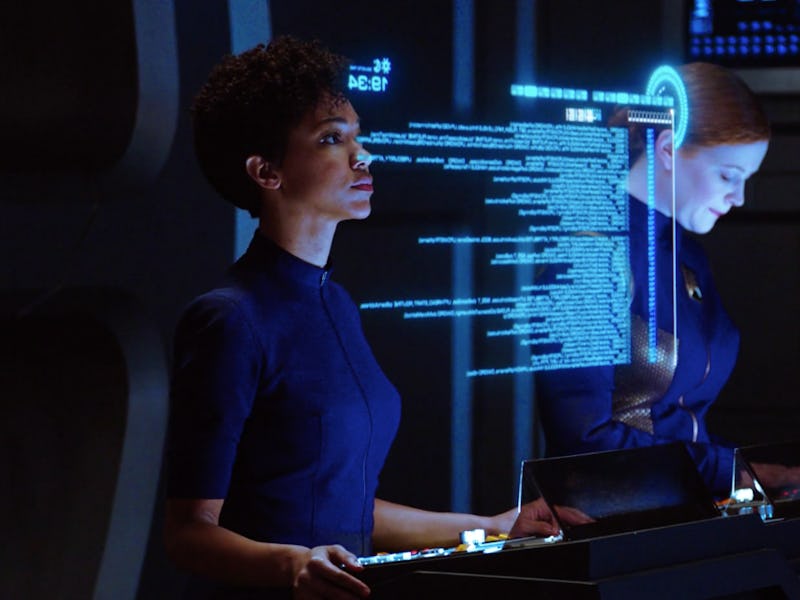'Star Trek: Discovery' Got Code Wrong. We Asked Programmers Its Future
It won't be Windows, that's for sure.

A scene in the most recent episode of Star Trek: Discovery finds main character Michael Burnham set to work debugging some mysterious computer code. Well, mysterious to her, at least — eagle-eyed computer programmers instantly recognized what she was working on as proof Starfleet is still running Windows in the year 2256.
Considering how fast computers evolve, it’s more than a little hard to believe we would still be working with what is recognizably Windows code nearly 250 years from now. In fact, the code in question comes from Stuxnet, a bit of malware likely developed by the American and Israeli governments to damage Iran’s nuclear program, which goes just a little against the whole Star Trek ethos.
But those not well-versed in the complexities of computer code — this reporter included — might wonder why Windows code is so instantly recognizable as such, and whether there would have even been any way for Star Trek to feature some 23rd century code without it looking silly to those who know computers. To find out, we asked the nearest available experts: Inverse’s crack team of software engineers.
“Windows is easily recognizable because of the commands that are inputted,” says Kameron Niksefat. “The biggest hint it’s Windows is the __stdcall function.” That particular function is unique to Windows, and it’s in every line of the code seen onscreen.
That function is the dead giveaway Windows made it to 2256.
“Just reading that code on the screen it looks like a header file,” adds Clayton Gentry. “Which is basically where you’d list out all the functions your programs supports, what kind of inputs each function takes and what kind of output it turns — integer, true/false, a word, etc.”
So eagle-eyed computer programmers probably got a good chortle out of this scene in Discovery and its implication that Starfleet still hasn’t found a better operating system than Windows, but it’s fair to ask what the alternative would be. Sure, Star Trek already created an entire language for the Klingons to speak, but a whole new — and authentically futuristic — computer language for what is only a few seconds of screen time? That feels like a big ask.
Yet that still leaves the question of what form computer language might take by the time we actually get to 2256.
“I think it’s pretty tough to say what code will look like in the 23rd century,” says Gentry. “I’m skeptical it’ll exist as we know it. The point of code is to express logic to a machine. Doesn’t have to take the form of lines of text on a screen necessarily. I think it would be awesome if we’ve moved past that by then. I hope/expect we will have.”
The long-term future of code, then, might be one where it’s a part of our daily lives, not just embedded deep within the tech we use but also as something we regularly interact with.
“I definitely think it could move to a more modular, human-accessible format with the possibility of super users creating these modules that people would use on a daily basis to configure/put together/command whatever,” says Niksefat. “Almost like interacting with virtual objects and putting them together without really ever seeing the code
Or maybe computers will become so advanced that code becomes something entirely beyond us. If that’s the case, the most inaccurate part of the Discovery scene isn’t that the Federation is running Windows, but that Burnham is looking at it at all.
“Honestly, code could start writing itself in way as well if we make progress on A.I.,” says Niksefat.
“I agree self-writing code will become more of a thing,” adds Gentry. “I also think code will be much “easier” to write/create as people develop more and more stable [interfaces] for others to build on top of.”
In all likelihood, computer code is going to morph, transform, and evolve countless times over between now and 2256, ending in something we could barely hope to recognize now. But for now, we’re left with the basic fact that starships these days might look like the Apple Store, but Star Trek’s future apparently belongs to Microsoft.
If you liked this article, check out this video of a toy that teaches kids to code.